Composer Cribs: Charlie Clouser, Los Angeles, CA
Some composers live a career behind the scenes – Charlie Clouser is not one of them.
While he currently spends his days and nights creating high-visibility soundtracks (the entire Saw series, Resident Evil: Extinction, “Numb3rs,” “American Horror Story”), he’s spent his time in the spotlight. Clouser was keyboardist/programmer for Nine Inch Nails from 1994-2000, and contributed synth work and remixes to myriad other elites including Marilyn Manson, White Zombie, Prong, David Bowie, Snoop Dogg, Rammstein, Jamiroquai, Deftones, Killing Joke, Esthero, and Meat Beat Manifesto.
So you want it dark, otherworldly and done right? A lot of movies, TV series, and video games do, and considering his resume its no wonder Clouser frequently gets the first call. But he’s not just resting on his laurels – he’s built up an arsenal of gear, instruments, and time-saving techniques that’s incredibly deep.
What is Clouser’s ingenious three-computer workflow? How does he take advantage of his space for homegrown reverbs? What is the tool he uses to take both hardware and software synths to the next level? Why do guitars matter so much in his sound design? How can cheap gear make your sound stand out? Just what is the TV-in-the-next-room technique? And what’s the most brutal part of Charlie Clouser’s job?
Absolutely essential advice for any composer – or sonic adventurer – follows. Miss this at your own risk.
Composer Crib
Composer Name: Charlie Clouser
Location: Somewhere in the canyons above Malibu, just outside Los Angeles.
Soundtracks Served: Film and television
Clients/Credits:
Films: The SAW horror movie franchise (all seven films), Death Sentence, Dead Silence, Resident Evil Extinction, etc.
Television: “Numb3rs” (CBS), “Las Vegas” (NBC), “Wayward Pines” (FOX), etc.
Latest Project: Childhood’s End – six hour miniseries airing December 14-16 2015 on SyFy.
IMDB Link: http://www.imdb.com/name/nm0167197/?ref_=fn_al_nm_1
Big Premiere: I’ve been in this location since 2006, but in terms of workflow my setup is about the same as I’ve had since 2003 or so, other than the usual upgrades to computers and such.
NINspiration: My years with Nine Inch Nails were in a great decade in the record industry, the mid- to late-1990’s. Trent had one of the biggest setups around, with a big SSL 4K console, dual Studer 24-track machines, lots of high-end outboard gear and dozens of synths. Between his setup, and all the guys in the band, it seemed like we had every synth and guitar pedal there was.
That decade was when we started to see some of the early software processing tools. We started with TurboSynth, then got into software like HyperPrism, AudioMulch and the first versions of Reaktor, which allowed us to really mess up sounds inside the computer – this was before the modern era of plugins, but some of those early software tools were really groundbreaking, and it was a great time to be involved in using that technology.
One thing that I took away from those years is that although Trent is obviously extremely talented and very knowledgeable about the technology, he’s not afraid to trust his ears and use crude or cheap tools if they sound interesting to him. That was always my thinking too, but working with him really reinforced that for me. Those years definitely widened the scope of what I thought possible, and since then I’ve been trying to use the techniques that I refined during my years of working with NIN in my scoring work.
My scores for the Saw movies have a lot of sounds that have a more gritty, industrial edge than a traditional orchestral score would, with heavily processed guitars, circuit-bent keyboards, and stuff like that.
That’s the kind of sound I was into before joining NIN, and I guess that’s why I was a good fit and why Trent wanted to bring me into his world for a while. I’m naturally attracted to dark and aggressive sounds, and I guess that’s why I wound up doing a lot of horror movies, because those sounds can work well in that context.
Room Cue: My current studio is the least custom setup I’ve ever had, actually, in terms of physical build-out. When I moved to this location it was because I found a house with the architectural style I liked in an isolated location that’s a little outside the chaos of Hollywood.
This house has a 22-foot high concrete and glass space with a very asymmetrical shape that gives me a great reverb character for recording – at around 2,000 square feet, drums sound massive in there, but smaller instruments have a nice, bright, live sound as well. The sound of the reverb in that space is bright and very dense without being overly long, and there’s alcoves and a suspended catwalk that allow for some interesting placement of microphones and instruments to achieve a wide variety of reverb characters.
My main composing studio is not too huge, about 16 x 24 feet, with some additional storage rooms, but it’s a totally separate structure to the main house which makes for good isolation. When I bought this place I was in the middle of three ongoing projects, so all I really did was set up some bass traps and wall treatments, lay down carpet over the concrete floors, drag the gear in and get to work.
After a little bit of fiddling with the placement of the subwoofers I wound up with a neutral sound that gives me solid and powerful bottom end even at reasonable monitoring levels. Mixes that I do here seem to translate very well to the big dub stages I’m generally delivering to.
Workflow Requirements: I use three main computers in my scoring rig – one each for Logic Pro, Pro Tools, and VideoSlave.
The Logic machine is a loaded Mac Pro 12-core cylinder with three BlackMagic MultiDocks that each hold four 2tb SSD drives, so that’s 16tb of sample library storage and 8tb for projects. This machine has the new MOTU 112d and 1248 AVB interfaces connected via Thunderbolt, so I’ve got something like 136 channels of digital and 8 channels of analog I/O, but not all of them are in use all the time.
I’m running Logic X, with the usual massive assortment of plugins from Waves, UBK, SpectraSonics, U-He, Native Instruments, and many others. Some favorites are Granite, which is a granular sample-mangler, GRM Tools, Iris and Ozone from iZotope, and some cheaper and weirder plugins from companies like SineVibes, Audio Damage, Togu Audio Line, and my old friend Steve Duda’s wild Serum virtual synth. Utilities like AudioFinder, Space Designer Manager, and the discontinued Redmatica sampler tools are pretty indispensable as well. I mix all of my own scores right inside Logic, using mostly Waves and UAD plugins as well as a lot of the stock Logic plugins.
The Pro Tools machine is a Mac Pro 6-core cylinder with one BlackMagic MultiDock, and it’s running Pro Tools HD Native Thunderbolt with an Avid MADI interface and an Avid Sync HD box. It’s connected to the Logic rig over MADI, so I’ve got 64 channels going back and forth between the two. I use Pro Tools primarily as a layback recorder – basically a mixdown deck – so I can print my mixes in one pass with up to 64 channels at once. This lets me print up to ten stems in one pass when I’m working in surround, which I do for film projects, or even more when I’m working in quad or stereo.
Printing my mixes to Pro Tools makes it easy to transport sessions to the dub stage, and it also lets me hear how one cue will overlap with the next and have one long session that represents the whole film or TV episode, so previewing cues and rough mixes is simple. I also use Pro Tools as the medium for capturing anything I record at other studios, so any orchestra or other live recordings done across town are done in PT and then I bring the sessions here, maybe do some editing before bouncing them over to Logic in slightly condensed form where I can further manipulate the audio, overdub, and mix.
The Pro Tools machine sends LTC timecode from the Avid Sync HD interface over a good old XLR cable to a Unitor MIDI interface on the Logic machine, so Pro Tools is always the timecode master when the two are running in sync, and word clock comes from the Sync HD over to the MOTU interfaces on the Logic machine for audio clock sync. My old rigs had Pro Tools HD3 with 192 interfaces, but the new native systems are great and I’ve had no issues with them at all. I don’t use any plugins on the Pro Tools machine, it’s just a big multitrack recorder and editor for me, so I don’t really miss the DSP power of the TDM cards.
The third computer is a Mac Mini with internal SSD, running VideoSlave software from Non Lethal Applications, which is a sophisticated timecode-slave video player software. It can load up a bunch of QuickTime movies into a playlist and will play the appropriate one in response to incoming MIDI Time Code, which comes from the Logic machine over Ethernet using the “network session” function in Apple’s AudioMIDI Setup application.
The video comes out of the HDMI port right on the back of the Mac Mini to my big screen, and audio comes out of a basic two-channel audio interface and goes into a pair of inputs on the Logic machine, so I can hear the dialog, SFX, and temp music tracks from the video. Having the video offloaded to a separate computer means I never have to mess with importing video into my Logic or Pro Tools sessions and lightens the load on those machines somewhat. I started using this type of setup many years ago, when computers were much slower and I needed to squeeze every bit of performance out of the Logic machine. These days that’s not such a big issue, but I still prefer the convenience of a dedicated video slave computer.
I also have some of the older silver Mac Pro towers, two are 8-core and two are 12-core. These used to be my main Logic and ProTools machines in two different rooms, but now they’re running Vienna Ensemble Pro to host large orchestral libraries in Kontakt and East-West’s Play sample players. These machines all have internal SSD drives and connect to the Logic machine over Ethernet only, so they don’t have audio or MIDI interfaces connected.
I don’t use these on every single project, but when I need to deal with a huge template it’s nice to have the additional horsepower. They are set to load the template when they’re powered up, so they usually don’t even have monitors connected to them – I use the MacOS screen sharing feature to remotely operate them from the main Logic machine. I know that a lot of people like to use Windows PCs as Vienna slaves, but since I already had these lying around it was simpler for me to just repurpose these machines rather than get new ones.
Ears On: For monitoring I use the DynAudio AIR series of speakers, and I’ve been using them for twelve years or so.
This system is a full 5.1 setup with bass management, and they have AES digital inputs and a dedicated remote control with recallable volume settings and individual mutes for each channel, which means I can feed a full-level AES signal from my rig into them and not need to attenuate the outgoing digital feed from the DAW machines. These speakers connect to each other using CAT5 cabling, and I love how they sound and how my mixes translate.
I have one set of five Air-15s and one AirBase-2 subwoofer, a smaller setup with three Air-15s with two Air-6s for surrounds and an AirBase-1 sub, and I just got a set of three huge Air-25s with two Air-20s and dual AirBase-24 subs that I’ll install when the new speaker stands get here.
I also have a pair of big old Tannoy fifteen-inch dual-concentrics out in the big room, as well as my old NS-10s with a Yamaha sub and some Auratones, but I rarely use those. I use the built-in speakers on my big LCD television as a real-world “television sound” preview, and I have wired up a TV in the bathroom so I can hear what my mixes sound like from a “TV on in the next room” and this is quite helpful sometimes.
SyntheticNess: I actually studied electronic music in college back in the 1980s, before MIDI, and in those days “studying electronic music at college” usually involved a large modular synth and some analog tape machines.
The Arp 2500 is what I learned on, along with some cheaper analog synths I owned, like a Korg MS-20, MS-50, and Arp Solus, all of which I still have. During my years in NIN I accumulated a pretty large arsenal of synths, from a 1969 Moog modular and MiniMoog Model D to more modern goodies like the Oberheim Xpander, Prophet VS, Super Jupiter, JP-8080, Waldorf MicroWave, Nord Racks, Roland Vocoder, etc. I still have all of that stuff, along with some more recent favorites like the MiniMoog Voyager, Dave Smith Pro-2, a couple of V-Synths, the Korg MS-20 reissue kit, and a good sized EuroRack modular setup.
I also still use MIDI drum kits from time to time, and I’ve owned many D-Drum systems over the years, but the Drumit-5 from 2box is my current favorite. It’s designed by one of the original guys from D-Drum, and it’s got mesh-head pads, tons of sample memory, and just feels great to play. I also have one of the original Korg WaveDrums with the RE-1 remote, which is a strange physical modeling instrument that can make some interesting sounds.
When the EuroRack explosion started up a few years back I jumped in with both feet since this is familiar territory, but now we have modern reliability and very low cost and a staggering variety of wild and exotic modules that make my old Moog modular look sort of primitive by comparison. My setup is 16 rows of 84hp, and some favorite modules are the Doepfer Xpander filter and morphing filter bank, the Cwejman EGs and compressor, LiveWire AFG oscillators, the Flame ClockWork, and stuff from Plan B, MakeNoise, The Harvestman and MFB. My EuroRack setup is driven from MIDI coming out of Logic, and also by a Sequentix P3 hardware sequencer, and sometimes by the Haken Continuum with their CV interface box.
The Continuum is a fantastic instrument in its own right, and makes an amazing controller for software instruments as well. It’s one of my favorite tools and lets me control software instruments in ways that aren’t really possible with any other device. Individual pressure and pitch-bend for each finger can take plug-ins like Omnisphere to a whole new level. It’s pricey, but unique and fantastic.
For recording acoustic instruments I have a CraneSong Spider, which is an 8-channel mic preamp and 8×2 mixer with high-end A-to-D and Dave Hill’s great tape saturation plug-in technology built-in. This lets me put up eight mics in the drum space and either record them individually or commit to a stereo mix right then. I connect it to the Logic machine via ADAT or AES and it just sounds great. Now that I have the AVB interfaces I can take the Spider and an interface into the live room and connect to the studio with a single CAT5 cable, and control the Logic machine in the other building from a laptop with screen sharing over WiFi, or just use the iPad remote software.
I also have a pair of AMS-Neve reissue 1084 mic pre/EQ modules which I love. For years I used vintage 1073 modules but the ones I had seemed to need repair fairly often, and I wanted the switchable high frequency EQ points of the 1084, so these reissue units suit me just fine. I use these going into a pair of line inputs on the Spider as needed.
There’s also a UA 6176 mic pre/compressor that I use for clean guitar or for when a tube mic pre is the answer, and a pair of Avalon U-5 direct boxes that I use for bass and for synths. The Avalons usually go into the Neves and that’s a killer signal path. For outboard compression I have a pair of Distressors and a UBK-modified Fatso that I can patch to inserts on the Spider or use as hardware inserts on the Logic machine.
The UBK Fatso is just amazing, it can really put the hurt on a signal. I was after a box that could get me sounds like the over-compressed drums on Portishead’s first album (Dummy), and the UBK Fatso delivers for sure. All of this hardware is wired up to a pair of 96-point Bittree TT patchbays.
For bass I usually go into an Avalon, take the direct signal to one input, and take the split into a SansAmp RBI which goes to a Distressor, and that’s my dedicated bass signal path. The Avalon U-5 has a passive EQ circuit with a few preset curves, and one of them is sort of a scooped eq that is really great for bass. I have a couple of guitar amps out in the big room, and a SansAmp PSA-1 and a few of the Line6 Pod racks from different eras. In the guitar rack there’s two huge slide-out trays with 8 MoogerFoogers and 24 of my favorite guitar FX pedals all wired up to a quarter-inch patchbay right below the Pod, so I can quickly patch in any weird combination of pedals and experiment.
All of the pedals are hooked up to power supplies that have voltage sag controls so I can simulate a dying battery, which can give an interesting sound on some of the distortion boxes. The MoogerFoogers have all of their control voltage inputs connected to another patchbay, and that whole thing is right underneath the EuroRack setup, so I can easily integrate them into the modular synth, or control them from CV or MIDI, so that’s pretty flexible.
I have built up a good collection of guitars over the years, and that’s where a lot of sounds I use are coming from. All of the droning textures on the SAW movies came from an old Gibson sit-down steel guitar, played with an e-bow and running through pitch shifter pedals and stuff like that.
I’m a huge fan of the e-bow and things like the Fernandes Sustainer, and I’ve got a couple of Les Pauls that have Sustainer pickups, and some other favorites are the Moog Guitar and Moog Lap Steel, both of which have the Paul Vo sustain engine and Moog filters built-in, and I’ve had them modified with Roland hex pickups so they can connect to the Roland VG-99 modeling guitar unit via 13-pin cable. I also have a Parker Adrian Belew guitar that has Line6 Variax, Sustainer, and Roland 13-pin built-in, and the combination of any of those guitars with the VG-99 is just a wild playground of new sounds and drone textures.
Although some purists scoff at the Line6 Variax guitars, I have them all, including the discontinued acoustic and bass models, and I use them all the time. I like to start with their simulation of an electric sitar or dobro, use the editor software to pitch-shift the strings down 24 semitones, and use an e-bow. This can get me some amazing dark and scary textures that still have an organic footprint.
To round out the guitar world I have the usual assortment of things like a ukulele, banjo, dulcimers, a Chinese ghuzheng, and a GuitarViol from Togaman guitars, which is sort of a cross between a cello and a guitar. The neck is laid out like a guitar, but with deeply scalloped frets and a curved bridge like a cello, so it can be played effectively with a bow. It’s a strange and beautiful instrument that I seem to use more for scraping, scary string noises than traditional cello parts. So, lots of weird guitar noise-making tools here for sure.
Picture This: As I mentioned before, I use VideoSlave on a separate computer so I don’t have to host video files in my main Logic machine.
While it’s not an absolute necessity, it does make things very convenient and quick, and it’s got its own feed to the big screen on the wall so video playback is just always running as a slave to whatever I’m doing in Logic. If I’m printing mixes to Pro Tools, then Logic is following Pro Tools and VideoSlave is following Logic. This works great for me.
Audience Accommodations: I do have some comfy Herman Miller chairs and couches lining the back wall of the room for visitors to relax in, but no “screening area” really. Over the years the number of times that directors actually come over to hang out has gone down – it seems that lately I’ve just been uploading music to their editors, who can place the music against picture and then the directors can review everything in the edit room, at home, or even on their laptop or iPad using the PIX system for secure streaming and downloads.
Fortunately I have a fiber internet connection so big file transfers are not a problem, and it seems that this process fits their schedules a little better. In the case of a film with a leisurely schedule there would be more long afternoons spent with the director sitting with me as I fiddle with tracks and play different ideas, but leisurely schedules seem to be fewer and fewer lately, and on the television projects the schedules are just brutal, so letting them review the music at their convenience via the PIX system seems to happen more often.
Complex Cue: Each score that I do seems to be more complex than the one before, but my score for Resident Evil: Extinction was one that seemed to have the biggest variety of stuff done here, from mega war drums, scrap metal percussion, and weird bowed metal sounds all recorded in the big room, to industrial-style guitars and drum programming, some circuit-bent toy keyboards and drum machines, a bit of modular synth madness, and lots of orchestral stuff and heavy digital sound design done in the box.
That one took its toll on my sleep schedule for sure.
Priceless Advice: In terms of the tools we have access to, this is a great era for creative musicians for sure. I hate to sound like the old guy who says, “Back in my day, we had to walk through the snow for miles just to get a mono synth bass,” but it’s kind of true. The quality and variety of sounds that we can produce with such low investment of cash is just staggering.
I’d just advise those starting out to not be afraid to try something new, different, or off the beaten path. The one thing I’ve tried to do, whether making records or scoring films, is to avoid doing what I hear everyone else doing. If someone out there is just killing it with a particular sound or style, then I try to steer to one side and find a path that hopefully fewer people are taking.
Sometimes I wind up hacking my way through the underbrush with a machete, wondering why I wandered off the road and into the overgrown bushes, but hopefully I’ll wind up in a nice secluded spot that I have all to myself. This approach might not work for everyone, but it seems to have worked for me.
— Charlie Clouser
Please note: When you buy products through links on this page, we may earn an affiliate commission.







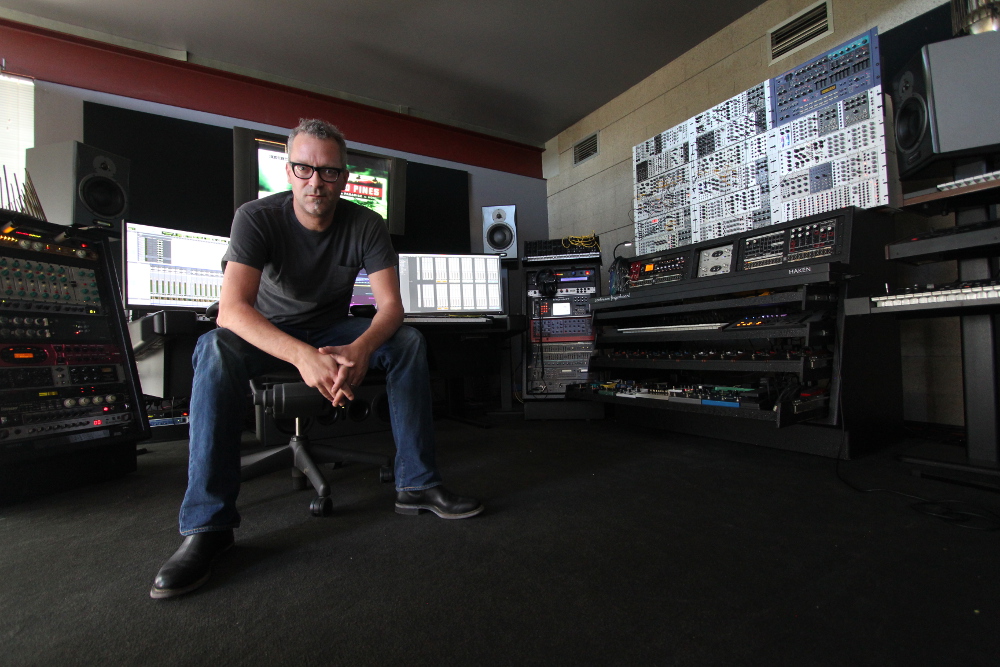
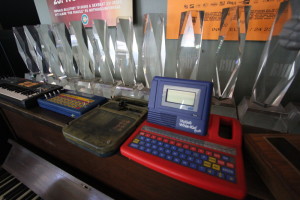
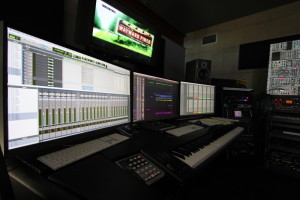
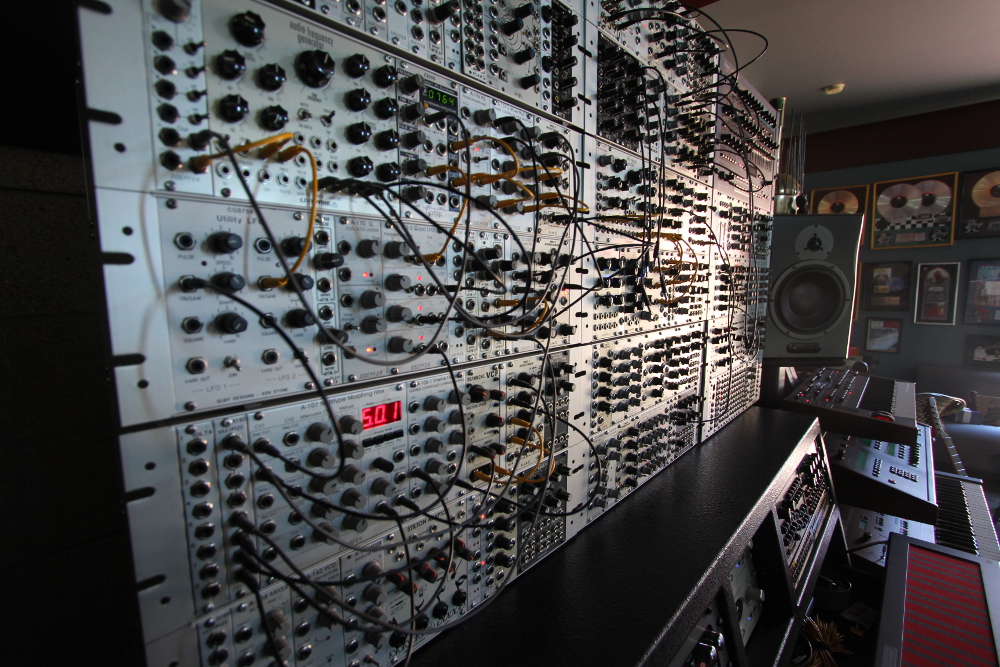
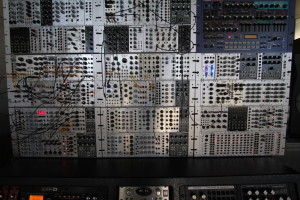
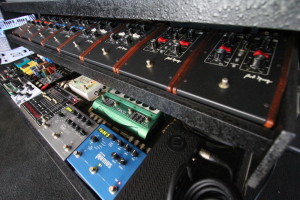
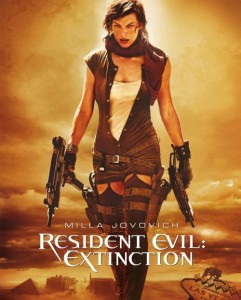
Puffer @ digitallofi
November 9, 2015 at 11:14 pm (9 years ago)Knows his shit. Living the dream.
Respect.